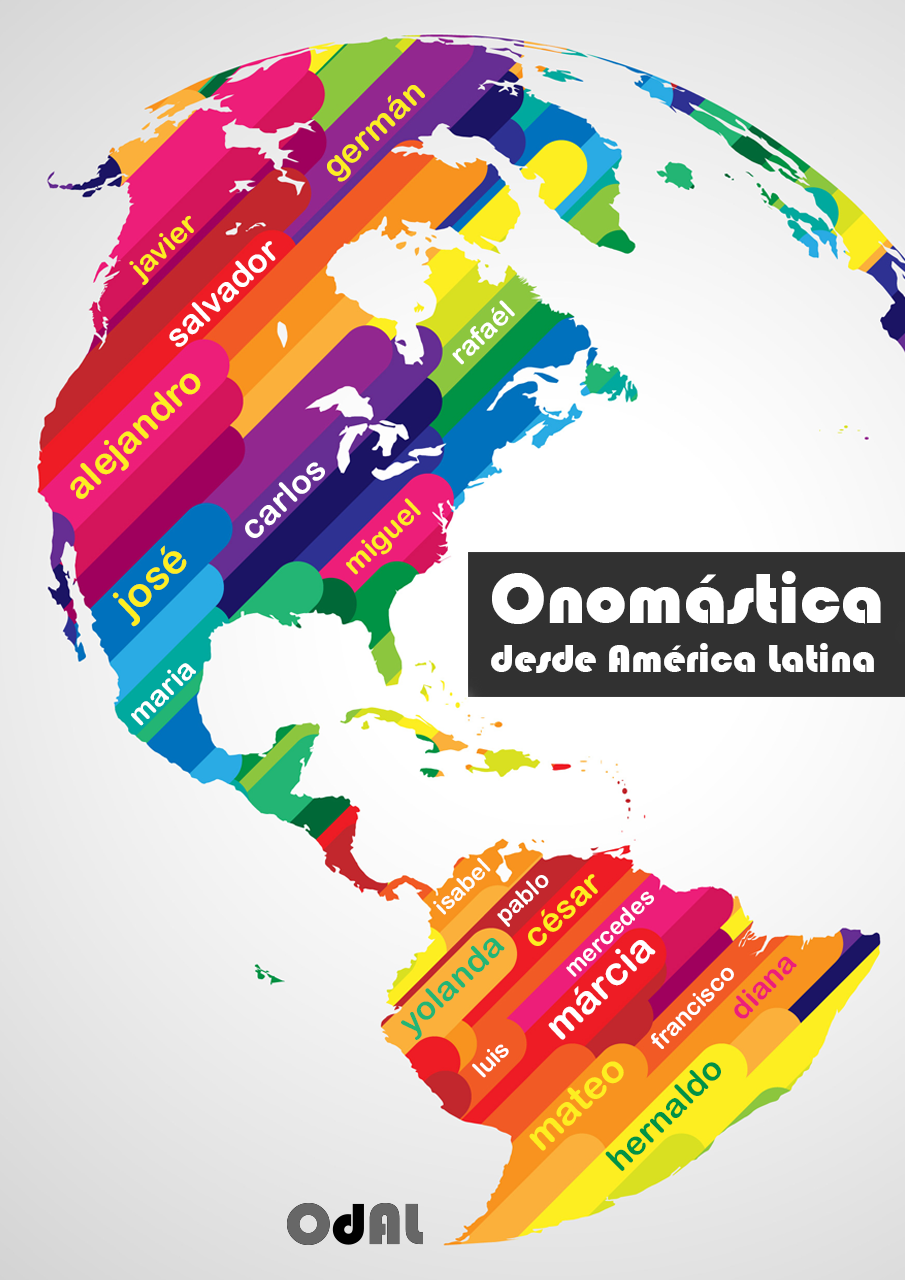Surnames of San Pablito: their structure over time (1874-1970)
DOI:
https://doi.org/10.48075/odal.v4i1.29794Keywords:
Anthroponymy, Anthroponymic system, First name, Surname, San Pablito PahuatlánAbstract
The current anthroponymic system of San Pablito Pahuatlán, Puebla, an Otomi community nestled in the Sierra Norte de Puebla, is a system of three file-boxes. The first file-box corresponds to the so-called first name, which can be composed of one or more lexical pieces; the second box is where the first surname is placed; and the third box, the second surname. However, at its inception it was a one file-box system. The purpose of this article is to explain the evolution of the system in San Pablito, focusing on nominals with a surname function.
The time period studied is from 1874, when the Civil Registry of Pahuatlán de Valle was established and began its functions, until the year 1970. Our database was fed the names of 3,094 people born in San Pablito and the source was their birth certificates.
The corpus consists of a total of 334 surnames, of both indigenous and non-indigenous origen, consisting of simple, compound and multiple surname structures.
This research is just one aspect of a research project whose goal is to describe the entire anthroponymic system of San Pablito, Pahuatlán.
References
Código Civil para el Distrito y Territorios Federales en Materia Común y para toda la República en Materia Federal. Diario Oficial XLVIII, Núm. 21 de 1928. Consultado el 19 de junio de 2022 en: diputados.gob.mx/LeyesBiblio/ref/ccf/CCF_orig_26may28_ima.pdf.
Espinoza de los Monteros Hernández, R. (2014) El Registro civil: una historia sesquicentenaria. Consultado el 10 de octubre de 2022. https://xdoc.mx/preview/el-registro-civil-una-historia-sesquicentenaria-roberto-espinosa-5e9a169183c31
Galinier, J. (1987). La onomástica otomí en: Pueblos de la Sierra Madre. Consultado en https://books.openedition.org/cemca/2717. DOI : 10.4000/books.cemca.2707 (el 15 de abril 2021).
Ley Orgánica del Registro del Estado Civil 1857 una versión consultable se encuentra en http://www.anfade.org.mx/docs/ponencias/Leyorganicaregistrocivil1857_anexo5.pdf consulta el 9 de septiembre de 2022.
López Franco, Y. G. (2010) Un siglo de nombres de pila en Tlalnepantla de Baz. Estudio Lexicológico y Sociolingüístico. México: FES Acatlán-DGAPA, UNAM – Plaza y Valdés (Lingüística).
Peral Rabasa, F. J. (2016) El campo semántico de las partes del cuerpo en el hñähñu de San Pablito, Pahuatlán. Proyección y extensión semántica, Tesis de Licenciatura en Lingüística, Escuela Nacional de Antropología e Historia, México.
Peral Rabasa, F. J. (2020) La antroponimia en tiempos de la protección de datos personales. Onomástica desde América Latina, 1:1, 45-76. https://doi.org/10.48075/odal.v1i1.24160.
Soria Mesa, E. Tomando nombres ajenos. La usurpación de apellidos como estrategia de ascenso social en el seno de la élite granadina durante la época moderna. . Disponible en internet en Biblioteca Genealógica, Heráldica y Nobiliaria www.bghyn.com
Obras de referencia consultadas
Bustos Argañaraz, P. (1997) Orígenes de los apellidos hispanoamericanos Boletín del Centro de Estudios Genealógicos de Córdoba Núm. 26, Córdoba, Argentina.
García Gallarín, C. (1999). El nombre propio. Estudios de historia lingüística española, PatRom-Centro de Madrid.
García Gallarín, C. (2014). Diccionario histórico de nombres de América y España (estudio preliminar), Madrid, Sílex. La versión consultada en línea se encuentra en: https://www.academia.edu/43331510/_1999_El_nombre_propio_Estudios_de_historia_ling%C3%BC%C3%ADstica_espa%C3%B1ola
Godoy Alcántara, J. (1871) Ensayo histórico etimológico filológico sobre los apellidos castellanos Imprenta y Estereotipia de M. Rivadeneyra. Madrid.
International Council of Onomastic Sciences (2020). Terminology. Disponible en https://icosweb.net/publications/onomastic-terminology/
Ley General de Protección de Datos Personales en Posesión de Sujetos Obligados (Diario Oficial de la Federación del 26 de enero de 2017. Disponible en línea en: http://www.diputados.gob.mx/LeyesBiblio/pdf/LGPDPPSO.pdf
López Franco, Y. G. (2010) Un siglo de nombres de pila en Tlalnepantla de Baz. Estudio Lexicológico y Sociolingüístico. México: FES Acatlán-DGAPA, UNAM – Plaza y Valdés (Lingüística).
Ormaetxea, X. El concilio de Trento y los apellidos. Antzina Núm. 1, junio 2006. pp. 15-16. Consultado en: https://www.antzinako.org/Revistas/Antzina_1.pdf, el 13 de julio de 2022. Pamplona, España.
Soria Mesa, E. Tomando nombres ajenos. La usurpación de apellidos como estrategia de ascenso social en el seno de la élite granadina durante la época moderna. . Disponible en internet en Biblioteca Genealógica, Heráldica y Nobiliaria www.bghyn.com
Zabalza, A (2014) Del Concilio de Trento al Registro Civil (1570-1870): la evolución de la onomástica en Navarra. Joan Tort i Donada, Montserrat Montagut i Montagut (eds.), Els noms en la vida quotidiana. Actes del XXIV Congrés Internacional d'ICOS sobre Ciències Onomàstiques. Annex. Secció 7, Barcelona, Generalitat de Catalunya. DOI: 10.2436/15.8040.01.181
Downloads
Published
How to Cite
Issue
Section
License
Copyright (c) 2023 Francisco J. Peral Rabasa

This work is licensed under a Creative Commons Attribution-NonCommercial-ShareAlike 4.0 International License.
Creative Commons Copyright Notice
Open Access Journals Policy
Authors who publish in this journal agree to the following terms:
1. Authors retain the copyright and grant the journal the right of first publication, with the work simultaneously licensed under the Creative Commons Attribution License that allows the sharing of the work with recognition of authorship and initial publication in this journal.
2. Mandatory authorities to assume commitments, for non-exclusive distribution of the version of the work published in this journal (eg, publish in an institutional repository or as a book chapter), with recognition of authorship and initial publication in this journal.
3. Authors are allowed and encouraged to publish and distribute their work online (eg in institutional repositories or on the personal page) at any point before or during the editorial process, as this can generate productive changes as well as increase impact and citation of the published work (See The Effect of Open Access).
Creative Commons License
This work is licensed under a Creative Commons Attribution-NonCommercial-ShareAlike 4.0 International License, which allows sharing, copying, distributing, displaying, reproducing, a whole or parts as long as it has no commercial purpose and is cited by authors and a source.

